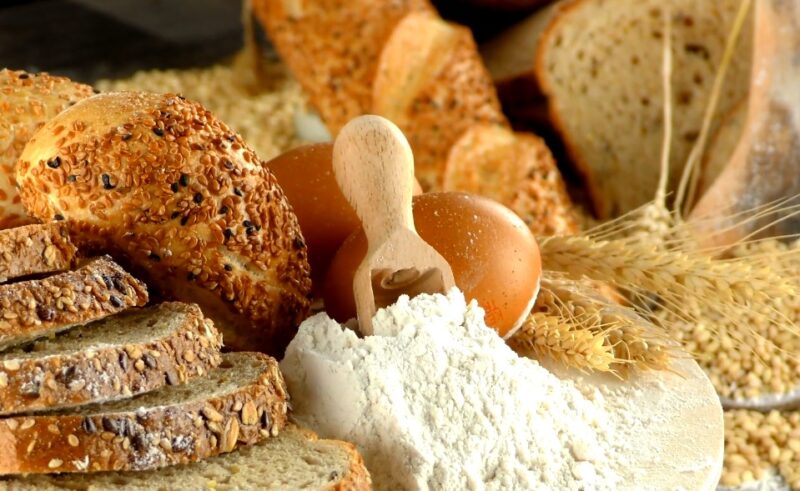Bread flour is a staple in many kitchens, especially for those who love baking their own bread. It’s known for its high protein content, which gives bread its chewy texture and helps it rise beautifully. But what if you don’t have bread flour on hand or you’re catering to specific dietary needs? Fear not! Here’s a comprehensive guide on how to make the perfect bread flour at home, inspired by various expert sources.
Bread flour differs from other flours due to its higher protein content, typically ranging from 12-14%. This added protein produces more gluten, leading to chewier bread with a better rise. In the UK, it’s often referred to as ‘strong flour’ or ‘strong bread flour’.
Bread Flour vs. All-Purpose Flour
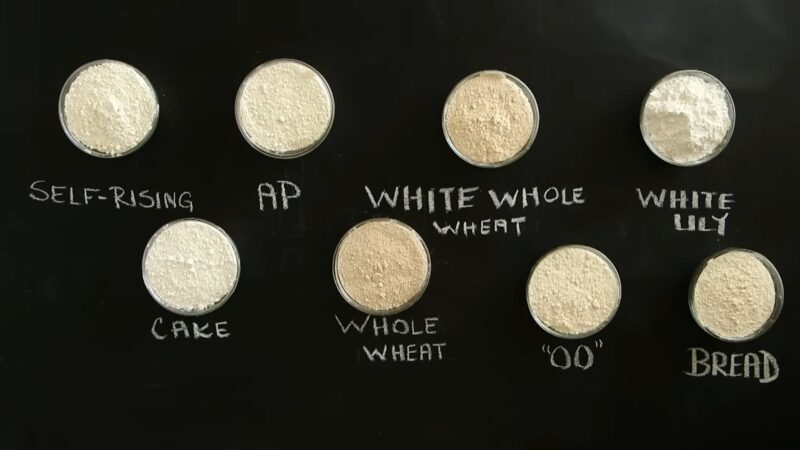
-
Protein Content and Gluten Formation
The primary difference between bread flour and all-purpose flour lies in their protein content. All-purpose flour, true to its name, is versatile and suitable for a wide range of baked goods. It typically contains a protein content of 8-11%. This protein, when mixed with water, forms gluten, which provides structure to baked items.
Bread flour, on the other hand, boasts a higher protein content, usually ranging from 12-14%. This increased protein level results in the formation of more gluten, which is essential for the elasticity and chewiness characteristic of many bread types.
-
Texture and End Results
Due to the higher gluten potential in bread flour, breads made with it tend to have a chewier texture and a higher rise. They also often feature a more robust crust, which many bread enthusiasts adore.
In contrast, baked goods made with all-purpose flour tend to have a softer, more tender crumb. This makes all-purpose flour ideal for cakes, cookies, and pastries, where a delicate texture is desired.
-
Versatility and Usage
While all-purpose flour can be used in a variety of recipes, from cookies to pancakes, bread flour is specially formulated for bread-making. Its properties cater to the needs of yeast-based recipes, ensuring that breads rise adequately and have the desired chewy texture.
However, in situations where you’re out of bread flour, it’s possible to mimic its properties using all-purpose flour. By adding a specific ingredient, like vital wheat gluten, you can elevate the protein content of all-purpose flour, making it behave more like bread flour.
The Secret Ingredient
Making bread flour at home is a simple and rewarding process. With just a couple of ingredients and a few minutes of your time, you can have a batch of homemade bread flour ready for your next baking adventure. The key to this transformation is vital wheat gluten, a high-protein flour derived from wheat. Let’s delve deeper into the process.
Vital wheat gluten is the natural protein found in wheat. It’s what gives bread its elasticity and chewiness. When added to all-purpose flour, it increases the flour’s protein content, making it more akin to commercial bread flour. This ingredient might go by several names, including wheat gluten or wheat gluten flour, but they all serve the same purpose: to elevate your bread-making game.
| Gathering Your Ingredients |
|---|
| Before you start, ensure you have the following: |
| – All-purpose flour |
| – Vital wheat gluten |
Step-by-Step Recipe
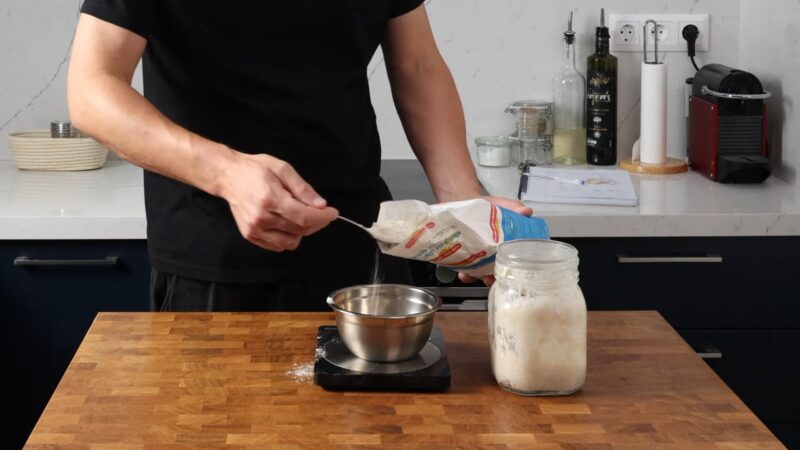
- Preparation: Begin by ensuring your workspace is clean. Have your ingredients and measuring tools ready. This will make the process smoother.
- Measuring the Vital Wheat Gluten: Take a teaspoon and measure out 1 ½ teaspoons of vital wheat gluten. This is the magic ingredient that will transform your all-purpose flour.
- Adding the All-Purpose Flour: With the vital wheat gluten in the measuring cup, proceed to spoon in your all-purpose flour. It’s essential to fluff your flour first by stirring it in its container. This ensures you don’t pack it too densely. Spoon the flour into the measuring cup until it’s full.
- Combining the Ingredients: Transfer the mixture of vital wheat gluten and all-purpose flour to a mixing bowl.
- Mixing: Using a whisk, mix the ingredients thoroughly. Ensure that the vital wheat gluten is evenly distributed throughout the flour. This might take a couple of minutes, but it’s crucial for consistency.
- Storing: If you’re not using the bread flour immediately, transfer it to an airtight container. Ensure the container is sealed tightly to prevent moisture from getting in.
- Using Your Homemade Bread Flour: Now, your DIY bread flour is ready to be used! Substitute it in any recipe that calls for bread flour. You’ll find that it gives your bread a delightful texture, similar to what you’d achieve with store-bought bread flour.
Tips for Success
- Always store your homemade bread flour in a cool, dry place to maintain its freshness.
- If you’re looking for a stronger bread flavor and chewier texture, consider adding a tad more vital wheat gluten. However, be cautious not to overdo it, as too much can make your bread too tough.
- Always fluff your flour before measuring to ensure accuracy.
Allergy and Dietary Adjustments
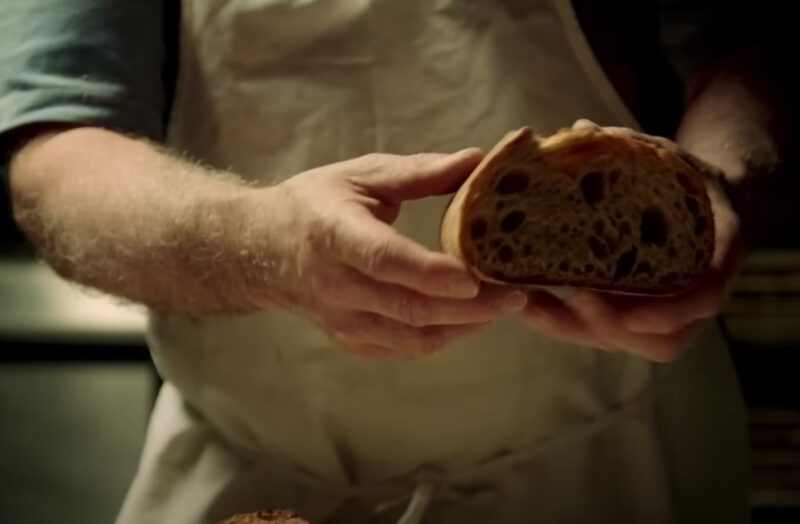
For those with gluten sensitivities or allergies, consider using gluten-free all-purpose flour combined with a gluten substitute like xanthan gum or guar gum. However, results may vary, and it’s essential to experiment to find the right texture and flavor.
For vegans and vegetarians, the standard bread flour recipe is already suitable as it doesn’t contain any animal products. However, always check the labels of any store-bought ingredients to ensure they meet your dietary requirements.
Storage Tips
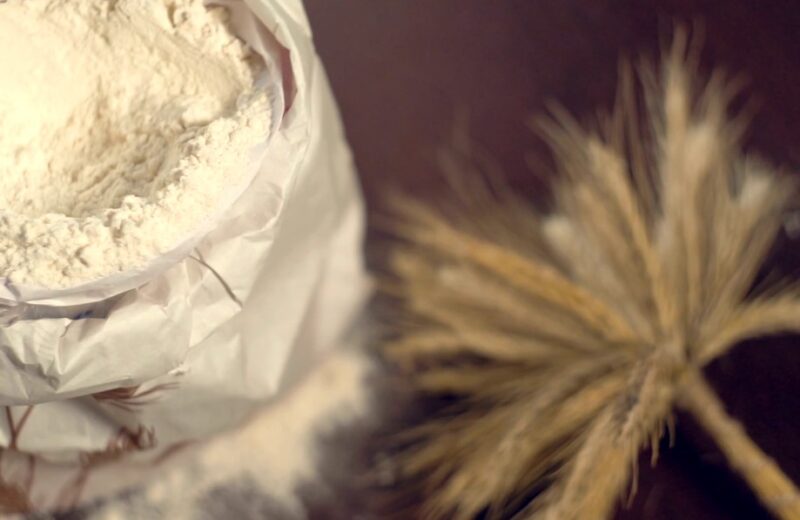
Store your homemade bread flour in an airtight container in a cool, dry place for up to six months. If you need longer storage, consider placing the flour in gallon-sized freezer bags and storing it in the freezer. Since flour contains minimal moisture, it won’t freeze solid and can be used directly from the freezer.
FAQs
What is the primary purpose of adding vital wheat gluten to all-purpose flour?
Adding vital wheat gluten increases the protein content of all-purpose flour, allowing it to mimic the properties of bread flour. This results in bread with better elasticity, structure, and chewiness.
Can I use whole wheat flour instead of all-purpose flour for this recipe?
Yes, you can use whole wheat flour. However, keep in mind that whole wheat flour has a denser texture and can absorb more moisture. You might need to adjust the liquid content in your bread recipe accordingly.
Is there a difference between store-bought bread flour and the homemade version?
While the primary goal is to achieve a similar protein content, there might be slight variations in texture and taste. However, for most home baking purposes, the homemade version works as an excellent substitute for store-bought bread flour.
How long can I store my homemade bread flour?
When stored in a cool, dry place in an airtight container, homemade bread flour can last up to six months. For longer storage, consider placing it in the freezer.
Is there an alternative to vital wheat gluten if I can’t find it in stores?
Vital wheat gluten is unique in its ability to enhance the protein content of flour. While there isn’t a direct substitute, if you’re unable to find it, consider using store-bought bread flour or adjusting your expectations for the texture of the final bread product.
Can I use this homemade bread flour for recipes other than bread?
Absolutely! This homemade bread flour can be used in any recipe that calls for bread flour, including pizza dough, bagels, and certain pastries. However, always be mindful of the texture and adjust the recipe as needed.
Final Thoughts
Making your own bread flour is not only economical but also ensures you always have some on hand for spontaneous baking sessions. Plus, the ability to adjust ingredients caters to various dietary needs, making homemade bread an option for almost everyone.
Remember, the joy of baking lies not just in the end product but also in the process. Whether you’re a seasoned baker or just starting, there’s immense satisfaction in creating something from scratch, especially when you’ve made one of the primary ingredients – the bread flour – all by yourself.

